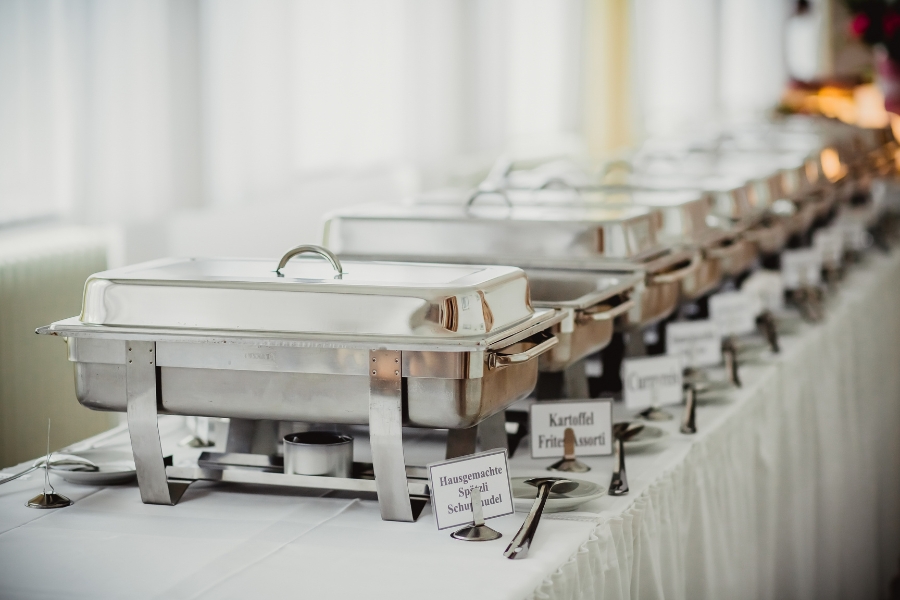
Catering has evolved far beyond simply serving delicious food. As more people prioritize sustainability in every aspect of their lives, eco-friendly catering has emerged as an essential service for those who want their events to leave a lighter footprint on the planet. Today, caterers are embracing sustainable practices and creative menu options that don’t just please the palate but also reflect a commitment to environmental stewardship. Let’s explore how eco-friendly catering combines innovation, responsibility, and flavor to create unforgettable events.
Sourcing Locally: Freshness Meets Sustainability
One of the most impactful ways caterers can embrace sustainability is by sourcing ingredients locally. This practice reduces the environmental costs associated with transporting food over long distances, such as fuel consumption and emissions. But the benefits of going local don’t stop there.
Local ingredients are fresher, more flavorful, and often more nutritious because they’re harvested at their peak. Caterers can create menus that highlight seasonal produce, bringing vibrant, natural flavors to the table while supporting nearby farmers and producers. For example, a summer wedding might feature juicy, sun-ripened tomatoes in a crisp caprese salad, while a fall corporate gala could showcase roasted butternut squash and apple compote.
Sourcing locally also fosters a sense of connection. Guests can savor dishes that tell the story of the region, whether it’s cheeses from a nearby creamery or greens harvested from a local farm. By reducing food miles and supporting regional agriculture, caterers can elevate their menus while contributing to a sustainable food system.
Low-Waste Menus: Eating with Intention
Food waste is a significant challenge in the catering industry, but eco-conscious caterers are finding creative ways to minimize waste without sacrificing quality or variety. Low-waste menus focus on using ingredients efficiently and repurposing scraps in inventive ways.
Every part of an ingredient can be utilized. Vegetable peels and trimmings can be transformed into flavorful broths. Stale bread can be repurposed into croutons or bread pudding. Even coffee grounds can find new life in desserts or compost. These thoughtful practices not only reduce waste but also demonstrate a chef’s creativity and resourcefulness.
Accurate portioning is another key strategy. Caterers work closely with clients to estimate guest counts and consumption patterns, ensuring that just the right amount of food is prepared. Many eco-friendly caterers also partner with local charities or food banks to donate any surplus, extending the impact of their efforts beyond the event itself.
Compostable and Reusable Utensils: Sustainable Serving Solutions
Gone are the days when single-use plastic cutlery and plates were the norm at catered events. Eco-friendly caterers are swapping out disposable items for compostable or reusable alternatives, ensuring that their service doesn’t contribute to the growing problem of plastic waste.
Compostable utensils, plates, and cups made from materials like bamboo, cornstarch, or sugarcane are designed to break down naturally, leaving no harmful residues behind. These items are perfect for casual or outdoor events where a low-waste ethos is front and center.
For more formal occasions, reusable options like glassware, porcelain plates, and stainless-steel cutlery offer a touch of elegance while being environmentally responsible. Some caterers even provide rental services for these items, ensuring they’re cleaned and reused for future events. By combining functionality with sustainability, these practices help events feel polished and professional without compromising eco-friendly values.
Energy-Efficient Practices: Greening the Kitchen
Behind the scenes, catering kitchens can be energy-intensive. From cooking equipment to refrigeration, these spaces require a significant amount of power. However, eco-friendly caterers are adopting energy-efficient practices to minimize their impact.
Investing in energy-efficient appliances is a big step forward. High-efficiency ovens, induction cooktops, and smart refrigerators use less power while maintaining performance. Bulk cooking and batch preparation also optimize energy use, reducing the need for appliances to run continuously.
Some caterers are taking sustainability even further by incorporating renewable energy sources, such as solar-powered kitchens. Even small changes—like using LED lighting, turning off unused equipment, and scheduling food prep during non-peak energy hours—can make a meaningful difference.
Plant-Based and Sustainable Menu Options
The rise of plant-based dining has been a game-changer for eco-friendly catering. Dishes that focus on fruits, vegetables, grains, and legumes have a significantly lower environmental impact than those centered on meat or dairy. Offering plant-based options isn’t just about catering to vegans or vegetarians—it’s about making a sustainable choice that benefits everyone.
Creative, satisfying plant-based dishes can steal the show. Imagine creamy cashew-based risottos, hearty lentil shepherd’s pie, or smoky jackfruit tacos. These options are as indulgent as their traditional counterparts and demonstrate that sustainable eating doesn’t mean sacrificing flavor.
For events that do include animal products, sustainable sourcing is key. Free-range poultry, grass-fed beef, and line-caught fish are examples of protein options that prioritize humane and environmentally responsible farming practices. Caterers can highlight these choices on menus to educate guests about their commitment to sustainability.
Reusable Decor and Eco-Friendly Displays
Sustainability goes beyond the plate—it extends to the event’s ambiance and presentation. Eco-friendly caterers are embracing reusable decor and displays to reduce waste and create a cohesive, green aesthetic.
Reusable materials like wooden serving boards, glass jars, and metal trays provide both functionality and charm. They can be styled to match any event theme, from rustic chic to modern elegance. Edible garnishes, such as fresh herbs or fruit, add visual appeal to food displays without generating unnecessary waste.
Potted plants or herbs make for stunning centerpieces that guests can take home as favors. Floral arrangements sourced from local, pesticide-free growers further emphasize the event’s commitment to sustainability.
Transparency and Client Education
Eco-friendly catering is as much about the journey as it is about the result. Many caterers embrace transparency, sharing their sustainable practices with clients to build trust and awareness. From highlighting locally sourced ingredients to explaining waste reduction strategies, this openness reassures clients that their values align with the service they’re receiving.
Some caterers take education a step further by incorporating sustainability into the event itself. For example, menus might include brief notes about the origins of key ingredients, or signage could explain the benefits of compostable utensils. These small touches inspire guests to think more critically about their own choices, amplifying the impact of the event.
Conclusion: Celebrating Responsibly
Eco-friendly catering is more than a trend—it’s a movement toward thoughtful, responsible celebration. By sourcing locally, minimizing waste, and adopting sustainable practices at every level, caterers are proving that delicious food and environmental stewardship can go hand in hand. Whether you’re planning an intimate gathering or a grand event, choosing an eco-conscious caterer is a step toward creating a memorable experience that reflects your values and respects the planet.
